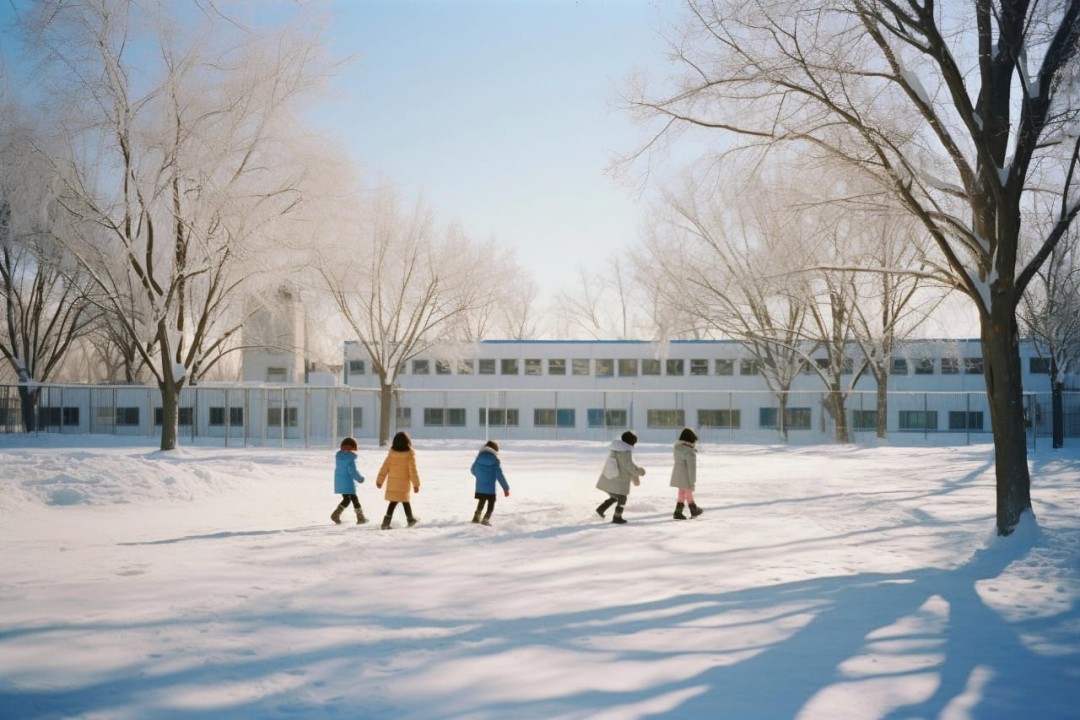
When winter storms sweep through North America, one of the most common questions on every parent’s mind is: Will school be canceled tomorrow?
While the weather may be unpredictable, the decision-making process behind school closures follows a surprisingly structured approach, though it varies between Canada and the United States.
Let’s take a closer look at how both countries handle these critical decisions, and how modern snow-day prediction tools are helping families on both sides of the border plan ahead.
How Canadian Schools Decide on Snow Days
In Canada, each province has its own approach to determining whether schools stay open during severe weather. Local school boards often, in consultation with transportation officials and meteorologists, assess a combination of factors before making an announcement, typically by 6:00 or 6:30 a.m.
The main criteria include:
- Road safety: Are bus routes and rural highways plowed and salted in time for morning travel?
- Temperature and wind chill: Extreme cold can be just as dangerous as heavy snow, especially for young children waiting outdoors.
- Visibility: Whiteout conditions or blowing snow can make travel unsafe even with minor accumulation.
- Regional differences: What’s considered severe in Vancouver may be a normal day in Winnipeg.
Because Canada’s geography varies so widely, school boards rely heavily on hyper-local forecasting. A snowfall that closes schools in one town might not affect the next.
To help parents anticipate these decisions, Canadian families increasingly turn to the snowday predictor. This dedicated tool analyzes local forecasts and past closure patterns to estimate the probability of a snow day.
It’s especially useful for parents in provinces like Ontario or Alberta, where snow conditions can change rapidly overnight.
Why Predictive Tools Are Transforming Winter Mornings
Waiting for official announcements can be stressful. Parents need to organize childcare, adjust work plans, and prepare meals all before dawn.
Tools like the snowday predictor take some of the uncertainty out of that process. By providing a probability (say, a 70% chance of closure), families can prepare in advance:
- Teachers can plan lesson adjustments for remote learning.
- Parents can make backup childcare arrangements.
- Older students can adjust study schedules or work shifts.
It’s not just about convenience, it’s about safety and preparedness. The earlier families can plan, the safer the morning commute becomes.
How U.S. Schools Handle Snow Day Decisions
South of the border, the process is similar but slightly more decentralized. In the United States, district superintendents usually make closure decisions in collaboration with local weather services and transportation departments.
To help parents navigate this uncertainty, many families rely on the snowday calculator, a U.S.-based forecasting tool that predicts the likelihood of closures based on ZIP code and current conditions.
Although this article is focused on Canada, it’s worth noting that the snowday calculator has become a reliable reference for American families facing the same morning stress. By comparing how U.S. and Canadian systems respond to winter weather, parents everywhere can better understand the logic behind these critical calls.
Comparing Canada and the U.S.: Similar Goals, Different Systems
While Canada and the U.S. share similar challenges, snow, ice, and unpredictable weather, their education systems differ in structure:
|
Factor |
Canada |
United States |
|
Decision Authority |
Regional school boards |
Local district superintendents |
|
Communication |
Centralized board announcements |
District and media alerts |
|
Weather Tolerance |
Higher in many provinces |
More variable by state |
|
Use of Predictors |
Snowday predictor for localized results |
Snowday calculator for U.S. forecasts |
In short, both systems aim for safety first, but the thresholds and timing differ depending on location, infrastructure, and climate expectations.
For example, two inches of snow might trigger a closure in North Carolina but barely slow down schools in northern Ontario.
How Technology Is Making Winter Planning Easier
What both countries now share is access to data-driven decision support.
Predictive tools don’t replace official announcements; they supplement them. By combining meteorological data, past school closure records, and regional climate variables, these tools give families insight that helps them plan smarter.
Parents can treat them as an “early-warning system” rather than waiting for a last-minute call. Whether you’re in Toronto or Minneapolis, that kind of foresight reduces chaos and keeps everyone safer on icy mornings.
Cross-Border Lessons for Families and Educators
Interestingly, the rise of these tools has fostered collaboration across borders. Teachers’ associations and parent forums often compare how Canadian and American systems handle closures, sharing strategies to reduce disruption and improve communication.
For Canadian educators, observing how U.S. districts implement flexible e-learning options provides valuable lessons for future snow days. Likewise, U.S. parents often look north for best practices in cold-weather preparedness from winter gear standards to school-bus policies.
By referencing both the snowday predictor and the snowday calculator, families and educators can see how two neighboring nations with vastly different climates are tackling the same problem in innovative ways.
Final Thoughts
The decision to close schools isn’t taken lightly; it involves balancing student safety, academic continuity, and family logistics. But thanks to digital forecasting tools, families no longer have to rely solely on morning news reports.
Together, these platforms give parents across North America the power to make informed choices, transforming snowy mornings from moments of panic into moments of preparedness.
Media Contact
Company Name: Snowdaypredictorcalculator
Contact Person: Andrew Jackson
Email: Send Email
City: New York
Country: United States
Website: https://snowdaypredictorcalculator.ca/







